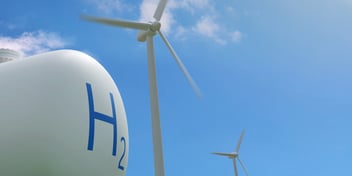Biosolids waste reduction and reuse
Hydrothermal gasification is a novel technology in waste processing that has recently become feasible as a result of increased demand in the hydrogen energy sector. It offers a sustainable solution to biosolids volume reduction with the advantage of producing clean hydrogen energy in the process.
With continued fossil fuel reliance and the increase in global population, there exists an accelerating need for clean and renewable sources of energy. On the other hand, valuable materials such as biosolids from wastewater treatment are seemingly being discarded to landfill or incinerated for energy, worsening the problem. Current developments in resource recovery engineering show several pathways to mitigate these issues. One of the more promising ones seems to provide a solution to renewable energy generation and a utilitarian approach to biosolids treatment; Hydrothermal Gasification (HTG).
HTG utilises the supercritical properties of water (>22MPa & 374°C) to produce a syngas that consists of a relatively high amount of hydrogen gas from biosolids. At a high enough temperature and pressure (600°C & 28 MPa), a complete conversion of organic substances in the sewage sludge can be assumed, giving reduced biosolids mass and yields of 16.78 kg of H2/ t of sewage sludge. The formation of char as a by-product has been observed in many experimental runs however it can be suppressed with the use of catalysts such as nickel or ruthenium. By applying this to wastewater treatment, biosolids waste stop becoming a cost and start becoming a source of revenue.
Past and current papers exploring HTG are assessed. Despite using different feedstocks, they provide insight into how the process could be optimised to become more sustainable (environmentally and economically) and energy-efficient. A technical analysis gives rise to several advantages over other technologies. Since the gasification occurs in supercritical water, the reaction can be carried out on wet sludge that is further diluted to ~15 wt%. This is crucial as drying can be energy intensive in biosolids treatment. One of the most attractive qualities about this technology is its self-sufficiency in terms of energy as the syngas consists of a significant amount of methane which could be reused for energy requirements. Although the process gives rise to some carbon emissions, since the product gas is compressed, the resulting concentrated carbon dioxide can be re-utilised by other industries, thereby reducing the carbon emissions.
Even though this technology offers several benefits, some challenges still exist for large-scale deployment. The adoption of this technology largely depends on hydrogen fuel cell availability and the price of hydrogen. As this technology is in its infancy, there has been no proven large-scale adoption and therefore remains to be optimised. Nevertheless, Australia’s National Hydrogen Strategy (Department of Industry, Science, Energy and Resources, 2019) outlines several incentives for the growth of “green hydrogen” technology. It is anticipated that global demand for hydrogen is bound to increase, with countries like China, Japan and South Korea being key players in the hydrogen market as importers. Hydrogen is bound to be a focal point in resource recovery and environmental sustainability.

